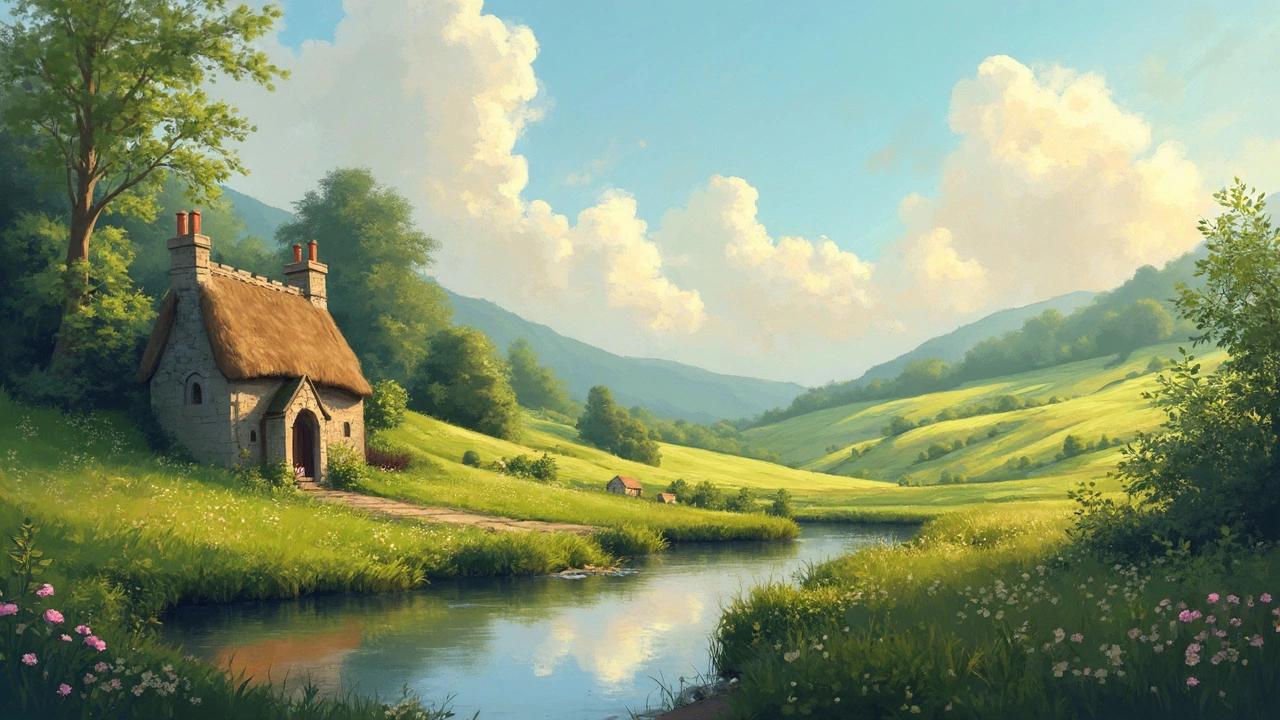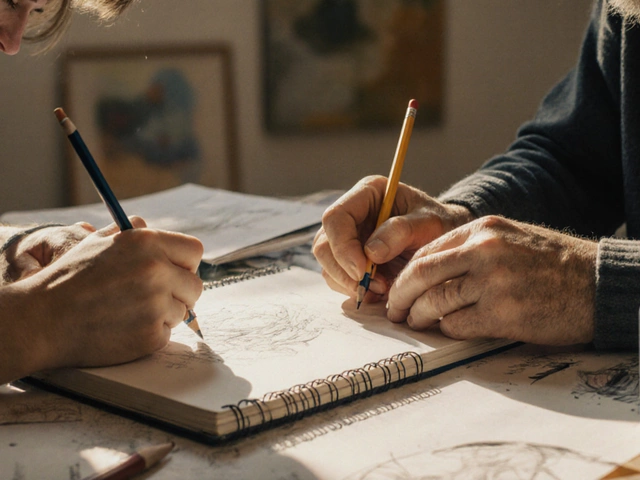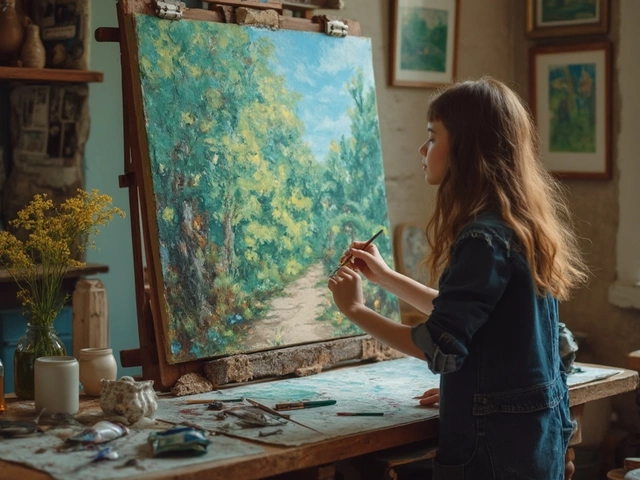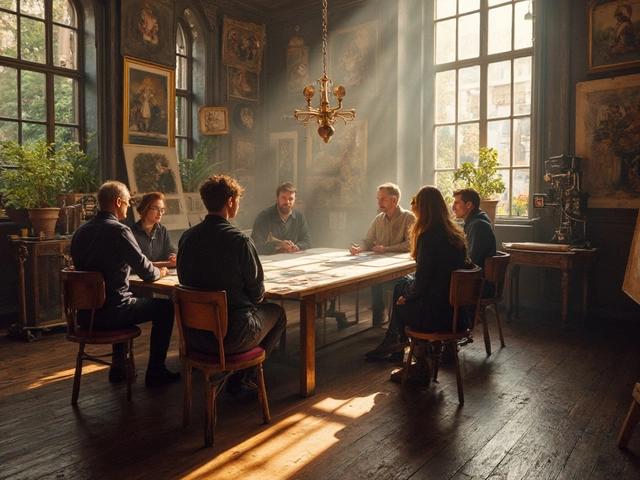Ever snapped a photo and thought, "This would make a great painting"? You're not alone. Converting images into digital paintings is a fun way to mix tech with creativity. But where do you start? Let’s break it down.
If you're diving into digital painting, first thing's first: understand what you're working with. It's not just a photo. When we talk about digital paintings, we mean transforming your image to look like it was hand-painted with brush strokes instead of just adding a simple filter.
The magic happens with the right software. Programs like Corel Painter or Adobe Photoshop come with tools specifically designed for painting effects. There are also user-friendly apps like Procreate if you're using a tablet. These programs offer brushes and effects that mimic real-world painting materials.
- Understanding Digital Painting
- Choosing the Right Software
- Basic Techniques for Art Conversion
- Enhancing Your Digital Artwork
- Tips for a Natural Look
Understanding Digital Painting
Diving into digital painting might seem a bit like learning a new language, but don’t worry, it's more fun than challenging. At its core, digital painting aims to recreate the look of a traditional artwork, but using digital tools. You get to turn those simple snapshots into something that looks like it belongs in an art gallery.
Unlike applying an Instagram filter, a digital painting conversion involves layer upon layer of intricate transformations. Think of it like a magic wand that reshapes various elements in your image until it looks like it’s been painted by a pro. Artists can use digital art software to manipulate the image, playing with brush strokes, color palettes, and texture to give it a realistic painted effect.
Programs like Photoshop provide a variety of brushes that simulate acrylics, watercolors, oils, and more. Each tool allows for different techniques, from layering colors to adjusting the opacity for a smooth blend. And don’t worry, if you mess up, there's always the trusty 'undo' button, right?
Here's a quick snapshot of what these digital brushes can do:
- Oil Brushes: Perfect for creating bold, vivid strokes that pop.
- Watercolor Brushes: Great for softer, flowing effects and blending colors.
- Charcoal and Pastel Brushes: Ideal for textured, gritty looks, bringing an organic feel to your digital painting.
Some cool stats to consider: As of 2024, almost 75% of digital artists reported using software like Photoshop or Procreate for their work, blending traditional art techniques with modern technology to create stunning results. The popularity of digital painting is only growing, as it opens up new opportunities for creativity and expression without the mess of physical materials.
Choosing the Right Software
The digital art world is packed with options. So, what's the best software for turning photos into stunning digital paintings? Let's break it down.
Adobe Photoshop is a giant in the graphic design arena. Known for its advanced tools, Photoshop allows you to layer different effects and apply brush strokes that look amazingly real. It’s got a learning curve, but if you’re serious about digital art, it’s worth it.
Then there's Corel Painter. This one's like the Swiss army knife for artists. It specializes in mimicking the look of traditional painting with plenty of brushes and textures. It's perfect if you're aiming for a more authentic painting vibe.
If you're an iPad warrior, Procreate is your go-to. It's one of the most popular apps for digital artists. Why? Because it’s intuitive and packs a punch with its powerful brushes and tools. Plus, it's made for the touch interface, making it super easy to use on the go.
For those on a budget, Krita, an open-source program, offers a fantastic array of digital painting tools without costing a cent. It's got a friendly community too, so you can learn and share tips along the way.
Here's a quick comparison to help you:
| Software | Best For | Cost |
|---|---|---|
| Adobe Photoshop | Advanced editing | Subscription-based |
| Corel Painter | Authentic painting effects | One-time purchase |
| Procreate | iPad users | Affordable one-time fee |
| Krita | Free and open-source | Free |
Remember, picking the right software is about what suits your style and budget. You might start simple and grow into a more complex toolset as you get the hang of things. Happy painting!

Basic Techniques for Art Conversion
When it comes to turning your photos into digital paintings, it’s all about using the right techniques to make your art pop. Let’s run through some key steps that will take your image from plain to painterly.
Start by choosing an image with strong composition and good contrast. These elements help to make the conversion process smoother and more effective. Next, you'll want to work with layers in your software. Layers allow you to build up paint effects without messing up the original image. Think of them like transparencies stacked on top of each other.
Using the brush tool effectively is another critical step. Most digital art programs offer a variety of brush styles, from watercolor and oil to ink. Each of these can give a different feel to your image. Play around with brush size and opacity to achieve the desired effect. The key is subtlety; you don't want your brush strokes to look too uniform or repetitive.
- Select Filter Effects: Most painting software allows you to apply various filters designed to mimic traditional painting techniques. Experimenting here can add texture and depth.
- Adjust Colors: Enhance or change colors to better fit the style you're going for. Programs like Photoshop offer tools like the Hue/Saturation adjustment.
- Blend and Smudge: Use blending tools to soften edges and smudge tools to create a more seamless, cohesive look.
- Detailing: Make final touches using detail brushes. Paying attention to small elements like highlights on the eyes or texture in the hair can make your painting more lifelike.
If you're feeling adventurous, explore tools like the liquify function, which can add an artistic flair by swirling and warping parts of the image for a unique interpretation. Just a reminder: always keep an eye on what feels natural. Over-editing can sometimes take away from an authentic painted effect.
Enhancing Your Digital Artwork
Once you've got the basic conversion down, you might want to add some flair to your new digital painting. Enhancing it can really make it pop and feel more like you just grabbed a brush yourself.
First off, think about lighting and shadows. Adding highlights and shadows can give your painting depth, making it look more lifelike. Most software like Adobe Photoshop offers dodge and burn tools that help lighten or darken areas of your image.
Textures are another way to up your game. You can use textures to mimic canvas or paper grain which gives your piece an authentic feel. Corel Painter provides texture libraries to play with, allowing your art to reflect the texture you’d see in real-life paintings.
Color grading is a game-changer. Don’t just stick to natural colors; experiment with different hues and saturation levels. Tools like hue/saturation adjustments in Photoshop can drastically change the mood of your painting, bringing out specific elements or creating an overall vibe.
- Adjust brightness and contrast to improve image clarity.
- Consider layering effects for more complexity; try out blend modes for unique results.
- A smart use of focal points will guide the viewer’s eye—use tools to sharpen or blur parts.
Image to painting conversions can sometimes look flat, so adding details manually like additional brush strokes or layers can emphasize certain areas and create real texture.
If you’re feeling data-driven, there’s some research out there showing that colored artworks tend to get 40% more engagement on social media. It might just be worth going bold with color!
Finally, and this is key—review your work with fresh eyes. Sometimes stepping away from the screen is all it takes to notice areas to tweak. Before you know it, you'll be crafting digital masterpieces that look like they could jump right off a gallery wall.
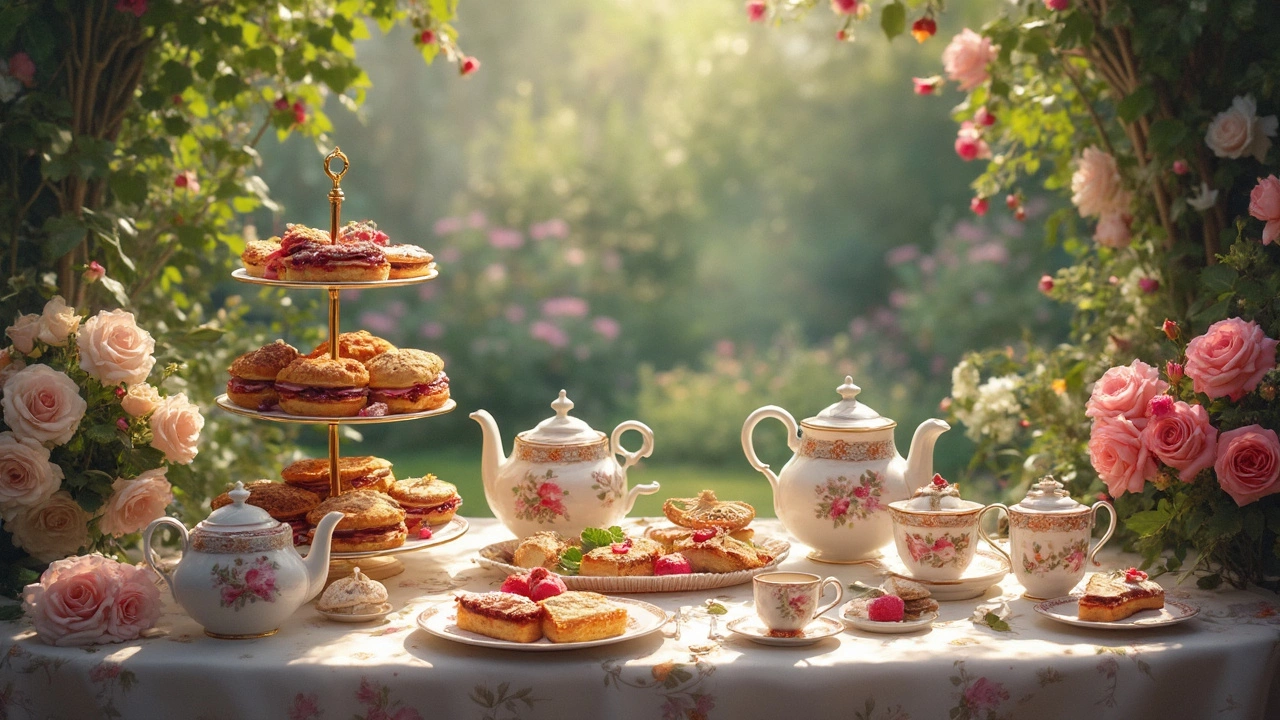
Tips for a Natural Look
Ever noticed how some digital paintings just have that 'wow' factor? It's all in the details. Here are some tricks to make sure your digital painting looks just as striking and believable as the original artwork.
First off, pay attention to brush strokes. In the real world, painters use different brushes for different textures. You can replicate this in digital art by experimenting with various brushes in your software. Try using a mix of hard and soft brushes to add depth and richness to your image. If you're working in Corel Painter or Adobe Photoshop, explore the brush libraries—there are tons of options that mimic traditional painting techniques.
Next, consider the color palette. A natural-looking digital painting often relies on harmonious colors. Digital tools let you adjust hues with ease, but the key is subtlety. Too much brightness or contrast can make your image look artificial. Play around with the color balance tools to achieve that perfect blend.
Also, texture is your friend. Add layers and use different textures to simulate the look of canvas or paper. Many digital art programs let you import textures or create your own—they’re fantastic for giving your piece a touch of reality.
- Try overlaying a canvas texture to mimic the feel of a real painting.
- Use layering to build depth in your artwork.
- Blending modes can help in seamlessly merging textures with your image.
Finally, remember less is often more. Resist the urge to overdo effects. It's tempting to try every tool and filter available, but restraint can make a world of difference. A natural look is usually achieved by allowing some imperfections.
Here's a quick tip: Zoom in and review each section of your painting at full resolution. Often, issues only appear when you're up close. By double-checking those areas, you can ensure your final piece holds up, both in detail and overall aesthetics.
So there you go! With these tips, you’ll be turning out digital art that looks and feels real. Whether you're using a high-end program or an art conversion app, these strategies will help bring your vision to life.
